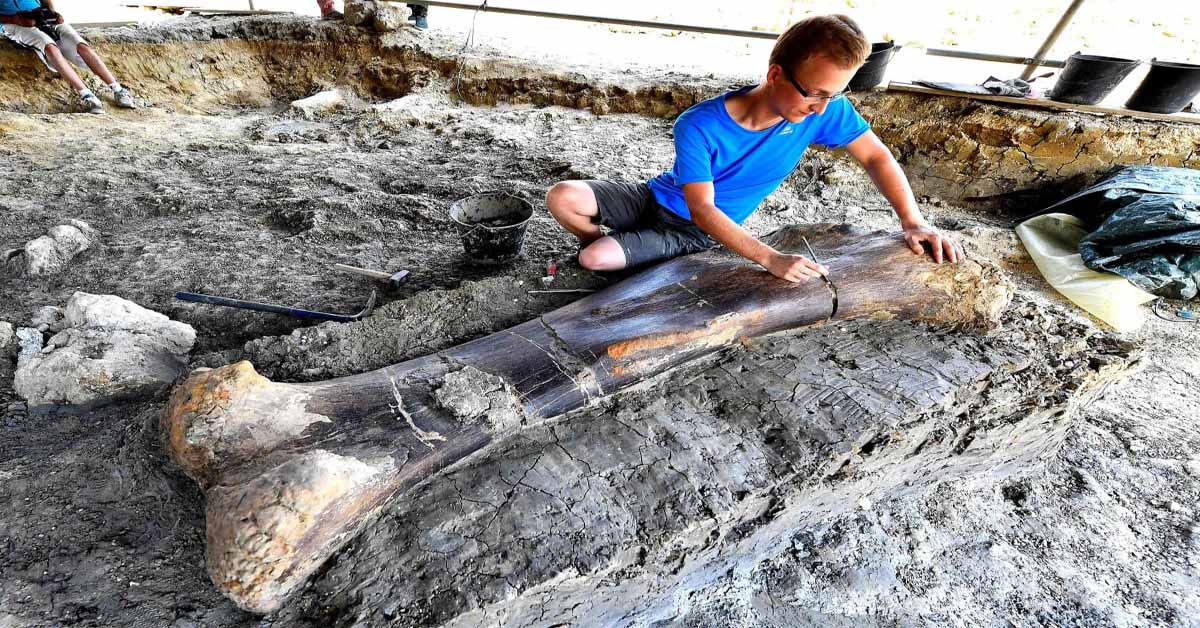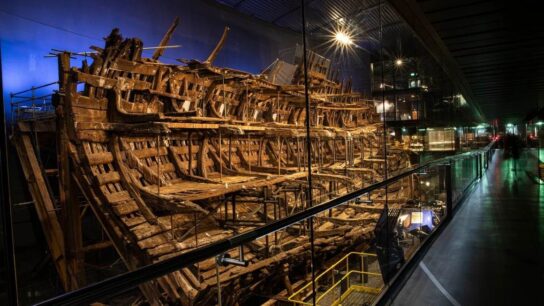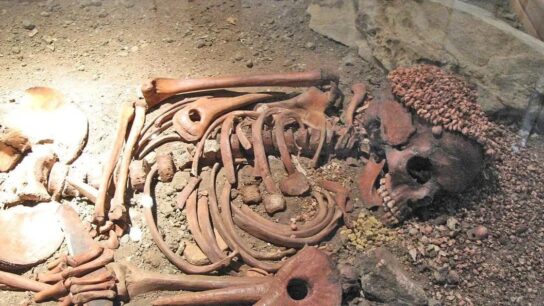Huge 6.5-FOOT thigh bone belonging to ‘world’s biggest dinosaur’ found in France – and it weighs 500 kilos
Palaeontologists have unearthed a 6.5 foot-long (two metre) thigh bone that belonged to a giant sauropod dinosaur around 140 million years ago. The enormous bone — which weighs in at around half a tonne — was unearthed from a dinosaur fossil-rich dig site in the department of Charente south west France.
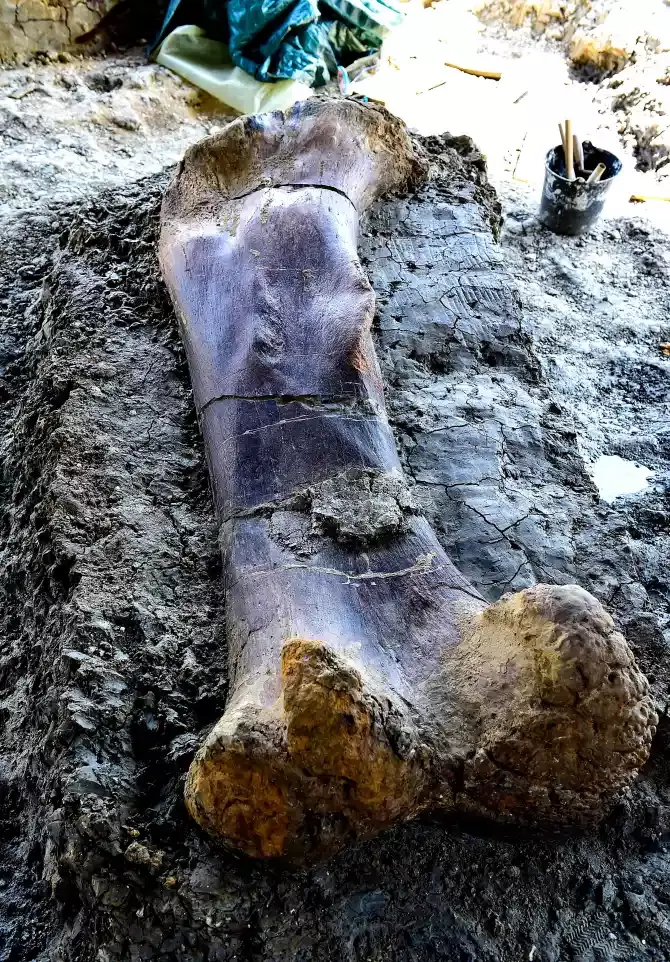
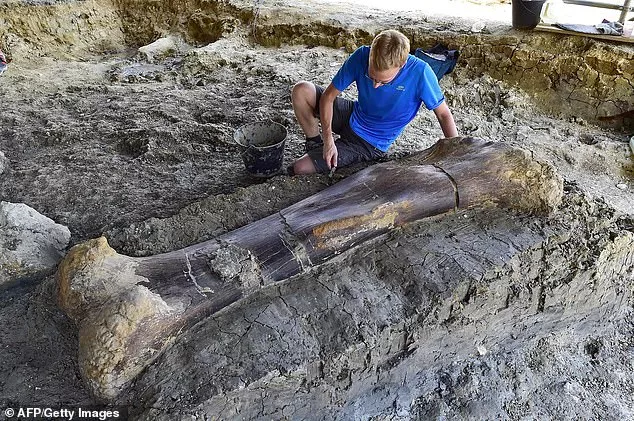
At the time that the giant dinosaur would have lived, the area — located near the town of Cognac — would have been a marshland.
Located in southwestern France, the Angeac-Charente dig site is unique across all of Europe, with palaeontologists having already uncovered around 7,500 bones — from 45 different species of dinosaur — since excavations began back in 2010.
‘This femur is huge! And in an exceptional state of conservation,’ Angouleme Museum curator Jean-François Tournepiche told The Local.
‘It’s very moving.’
Alongside the thigh bone, volunteers with the National Museum of Natural History in Paris also uncovered a giant pelvis bone from the same layer of clay.
Experts believe that the thigh bone belonged to a sauropod — one of a group of long-necked, plant-eating dinosaurs that include some of the largest animals to have ever walked the Earth.
‘We can see the insertions of muscles and tendons, scars,’ added Ronan Allain, a palaeontologist at Paris’ National Museum of Natural History.
‘This is a very rare find as large pieces tend to collapse on themselves, to fragment.’
Palaeontologists have been working to reconstitute a complete sauropod skeleton from several different specimens that have been unearthed from Angeac-Charente in the last decade — with the reconstruction now around 50 per cent complete.

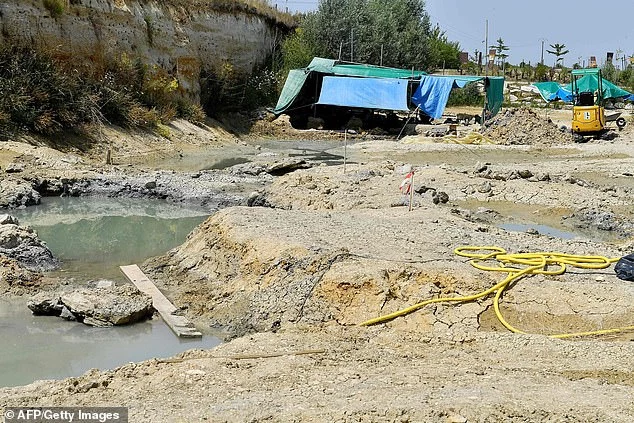


How the Dinosaurs Became Extinct Around 66million Years Ago
Dinosaurs ruled the Earth around 66million years ago, but suddenly disappeared in what is known as the Cretaceous-Tertiary extinction.
It was believed for many years that the changing climate destroyed the food chain of the huge reptiles.
However, in the 1980s paleontologists discovered a layer of iridium – an element that is rare on Earth but found in vast quantities in space.
When this was dated, it coincided precisely with when the dinosaurs disappeared from the fossil record.
A decade later, scientists uncovered the massive Chicxulub Crater at the tip of Mexico’s Yucatán Peninsula, which dates to the period in question.
Scientific consensus now says that these two factors are linked and they were both probably caused by an enormous asteroid crashing to Earth.
With the projected size and impact velocity, the collision would have caused an enormous shock wave and is likely to have triggered seismic activity.
The fallout would have created plumes of ash thought to have covered the whole planet, making it impossible for dinosaurs to survive.
Other animals and plant species had a shorter time-span between generations which allowed them to survive.
There are several other theories as to what caused the demise of the dinos.
One early theory was that small mammals ate dinosaur eggs and another proposes that toxic angiosperms (flowering plants) killed them off.

